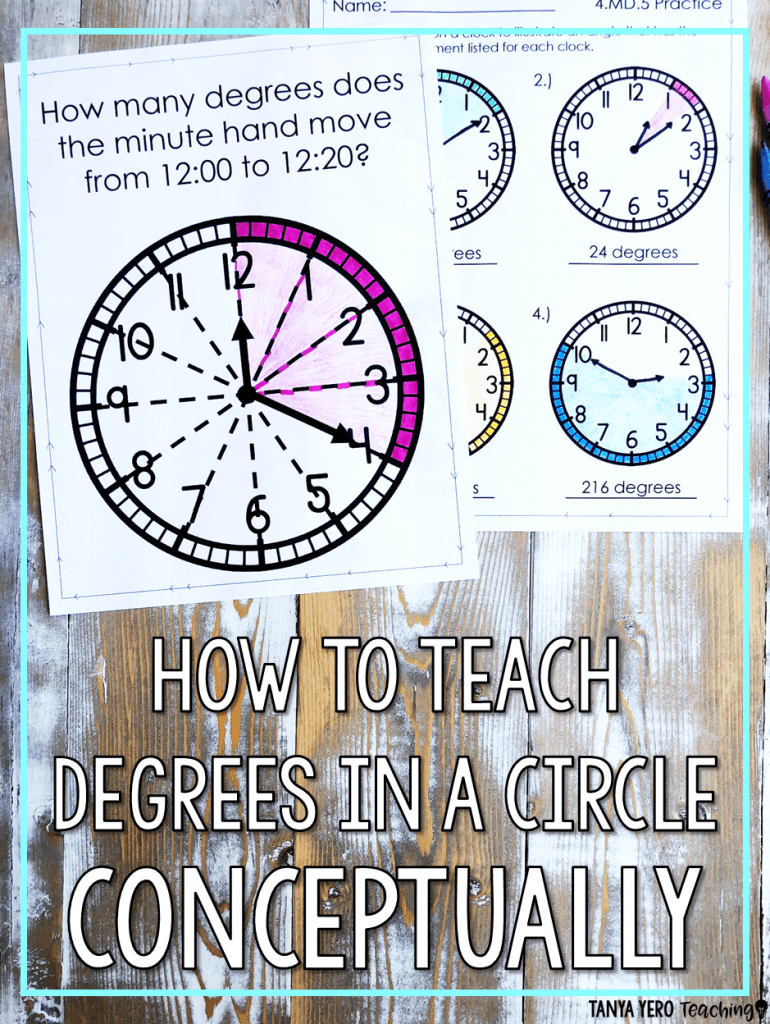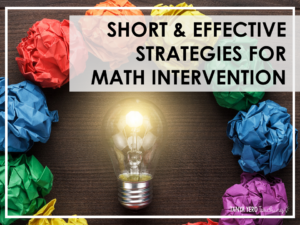
At first glance, teaching degrees in a circle appears simple, but it can pack a punch if you teach it conceptually. This measurement standard lends itself beautifully to geometry and improving spatial sense. Provide several opportunities for students to explore the different sizing of angles and to measure angles found within shapes.
Proper teaching of this standard will set your students up for conceptually mastering angles and identifying angle measurements in 2D shapes.
Day 1
On the first day we spend time exploring the concept of degrees within a circle using manipulatives from hand2mind. These manipulatives provide an excellent visual representation for turns within a circle, angles in general, and merging these two concepts together.
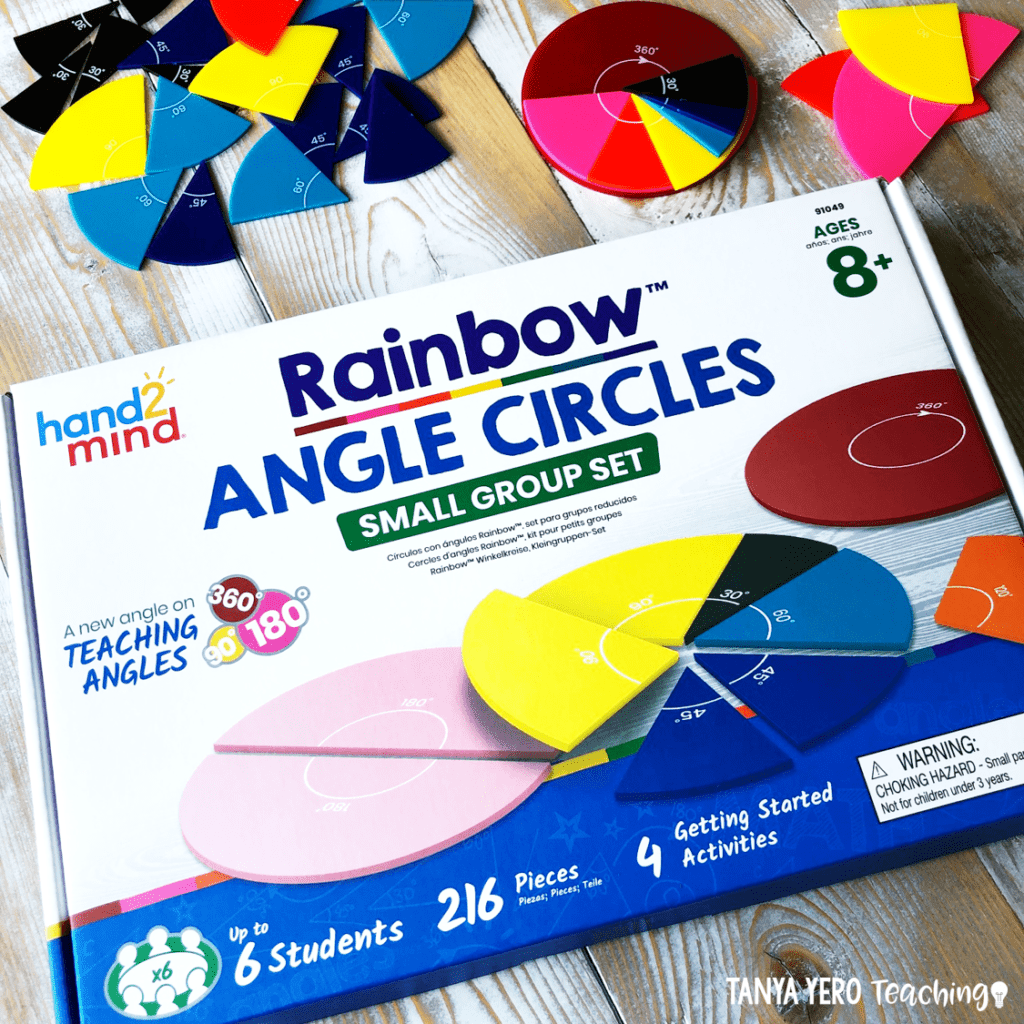
Encourage students to “play” with the manipulatives. Have students complete the two sheets below to structure their exploration and help make mathematical connections. These FREE printables are available by signing up below.
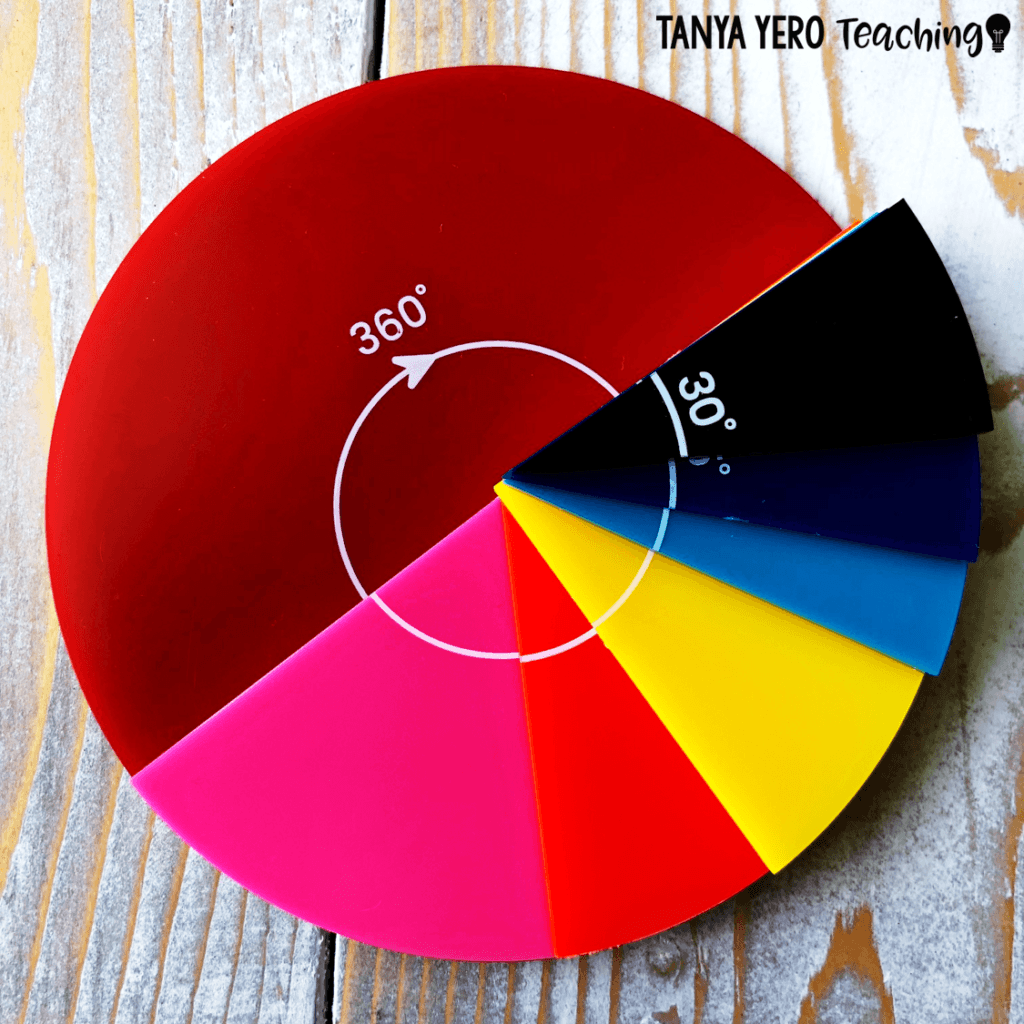
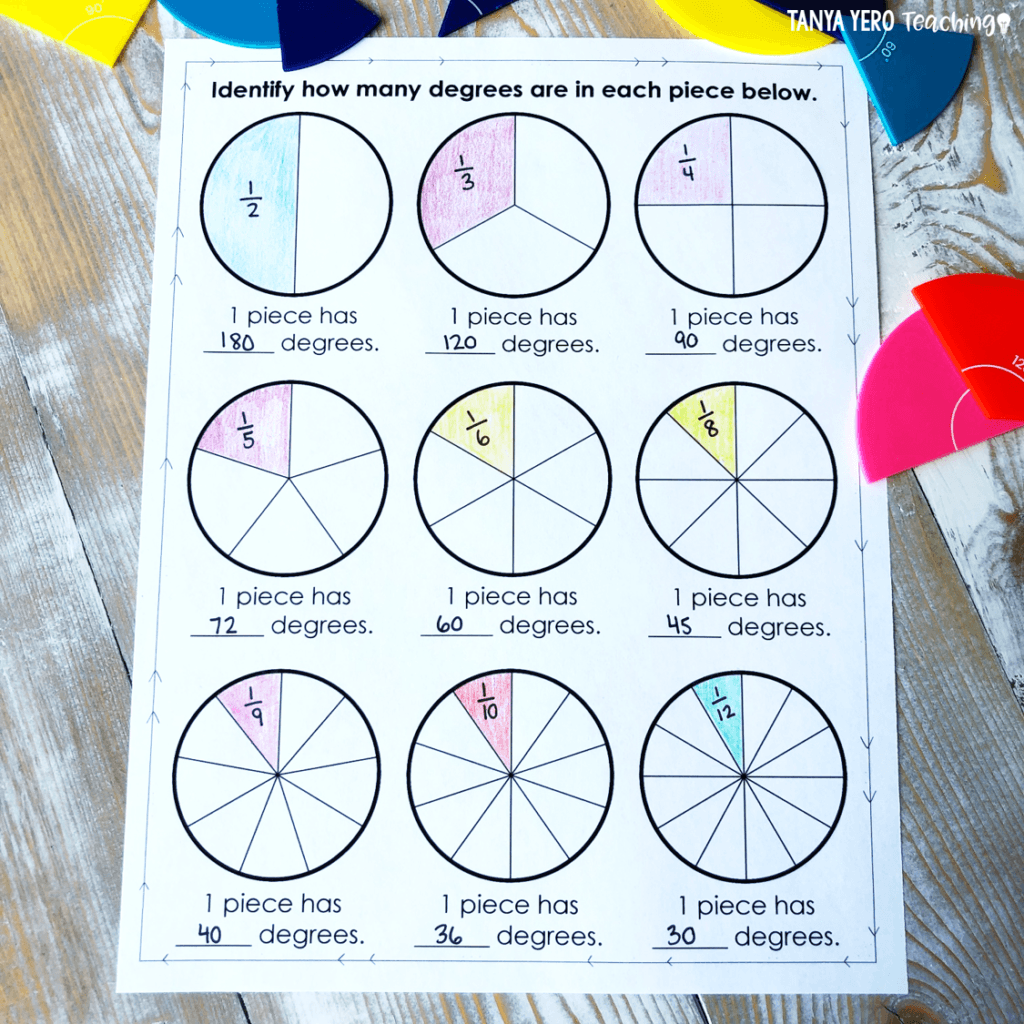
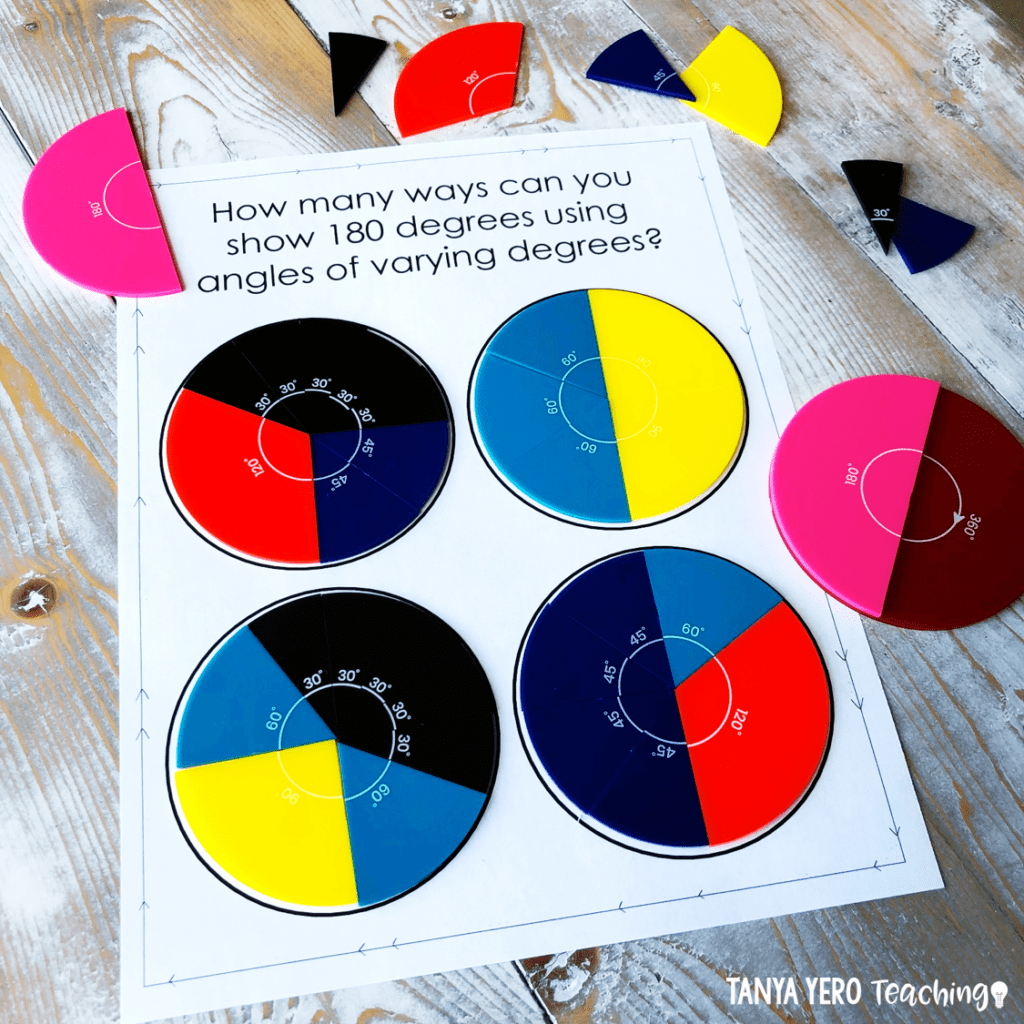
Day 2
On day 2 I ask my students to independently complete the question below without any support from me.
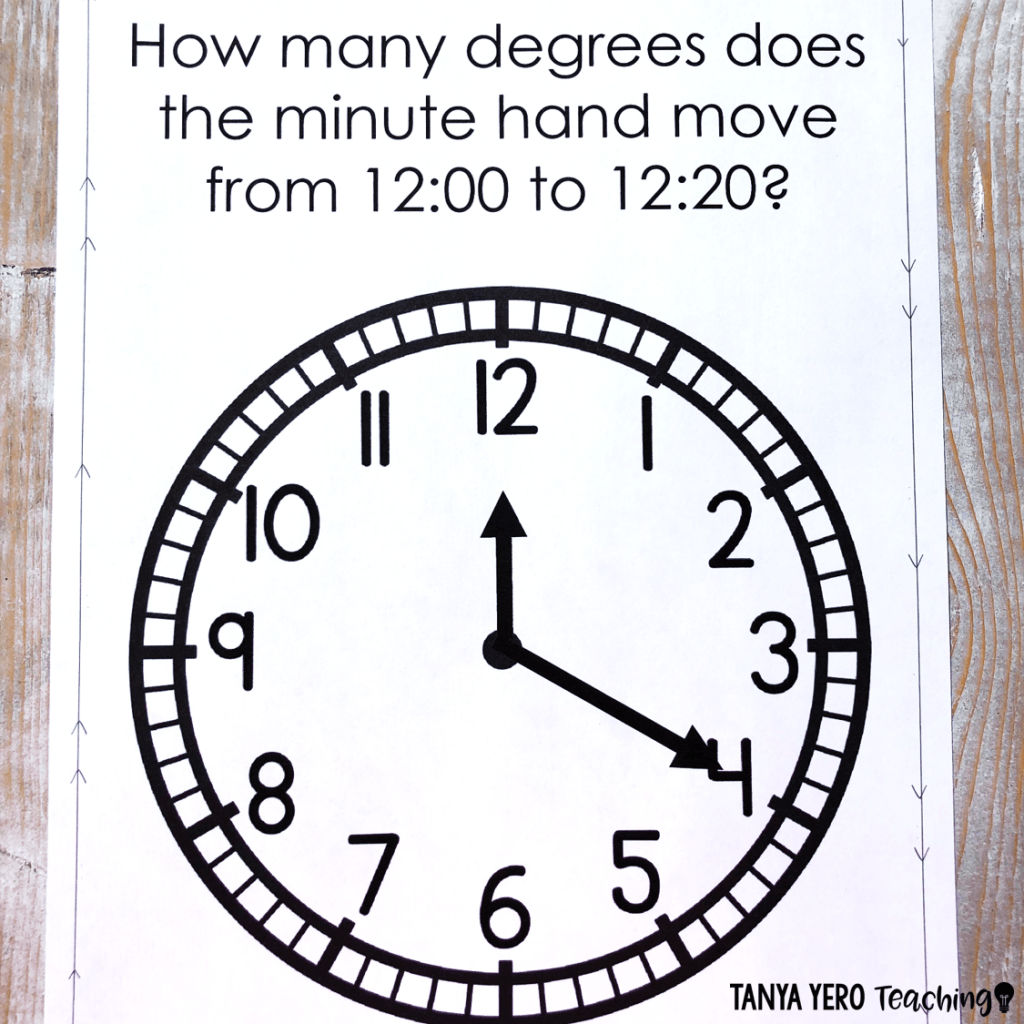
Most students will list 20 degrees as their answer. Then the following discussion will occur:
Teacher: “What kind of angle do you see?”
Student: “Obtuse angle.”
Teacher: “Correct. Just by looking at that angle, do you think it has a measurement of 20 degrees?”
Student: “No, it’s larger than that.”
Teacher: “Right. How many total degrees does an angle turn if it makes a complete turn?”
Next, I let students look at the question again only this time they are allowed to work in groups. I provide them with a large cut out of a clock.
Walk around and listen to what groups are saying. Support the idea of dividing the clock into equal parts. Encourage the idea of trying to figure out how many degrees are in between each tick mark on a clock.
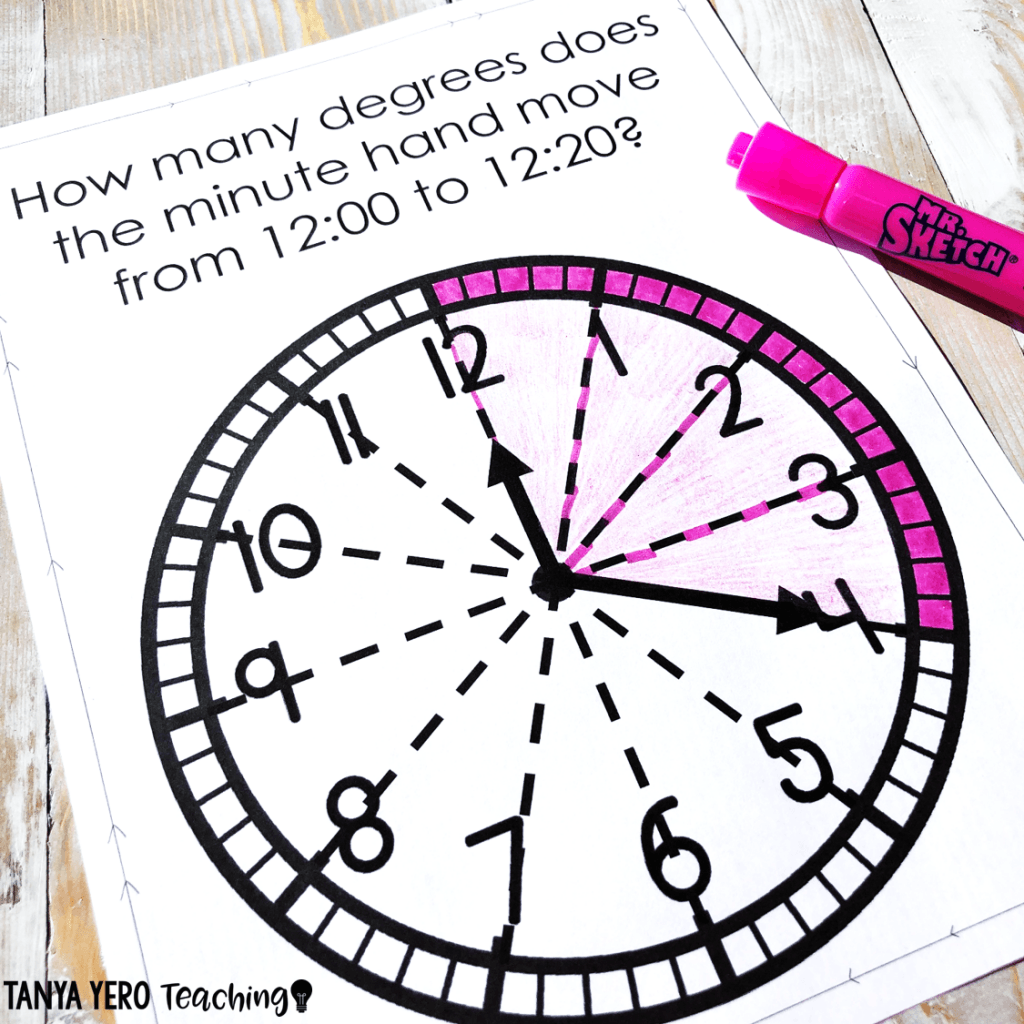
After some time I redirect the class back to a group discussion. Here are the key ideas I want to address:
- There are 360 degrees in a circle
- There are 30 degrees in every equal part of a circle cut into twelfths.
- There are 6 degrees inbetween every tick mark on a clock.
These discussions are so rich in math talk. You are targeting conceptual understanding of degrees in a circle. With this foundation now established, you can move on to more complex questions. Use times that do not end on an interval of 5 or times that do not start at the beginning of an hour.
Expand Understanding
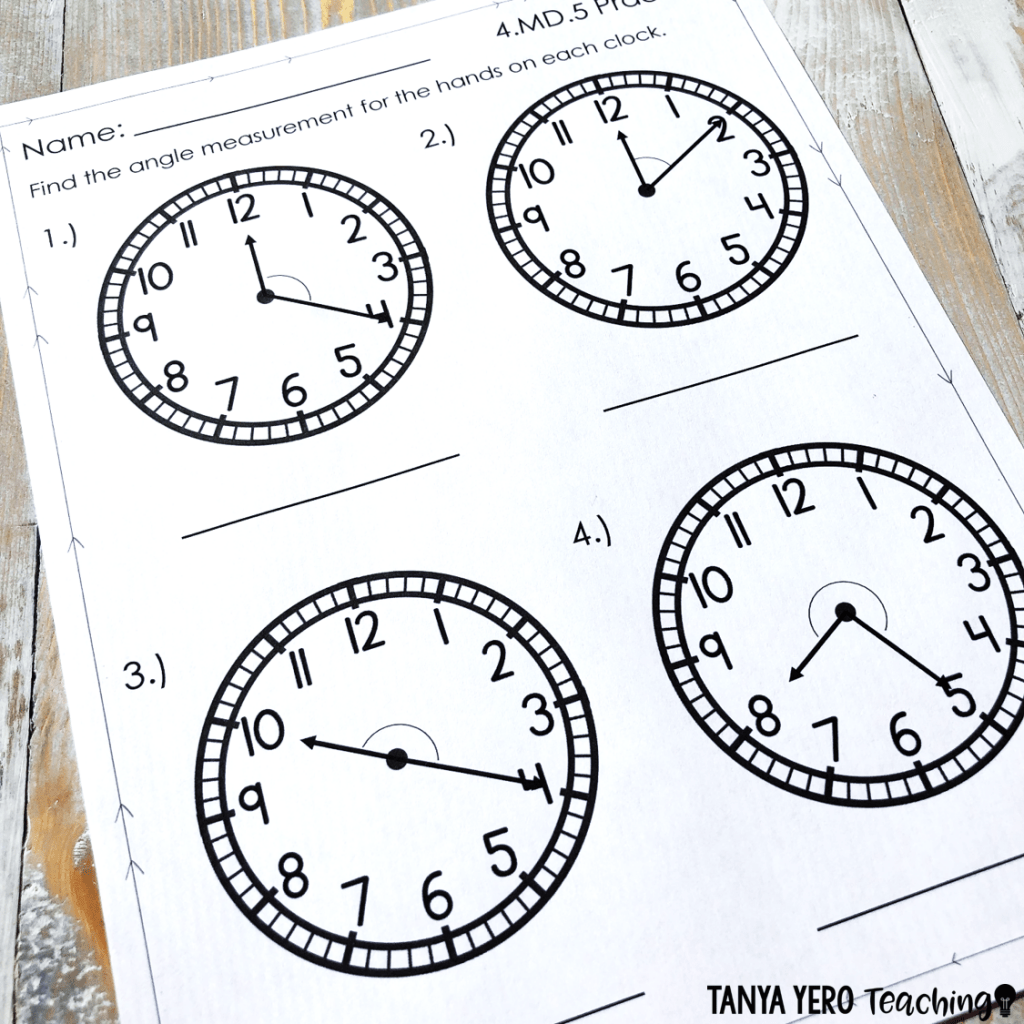
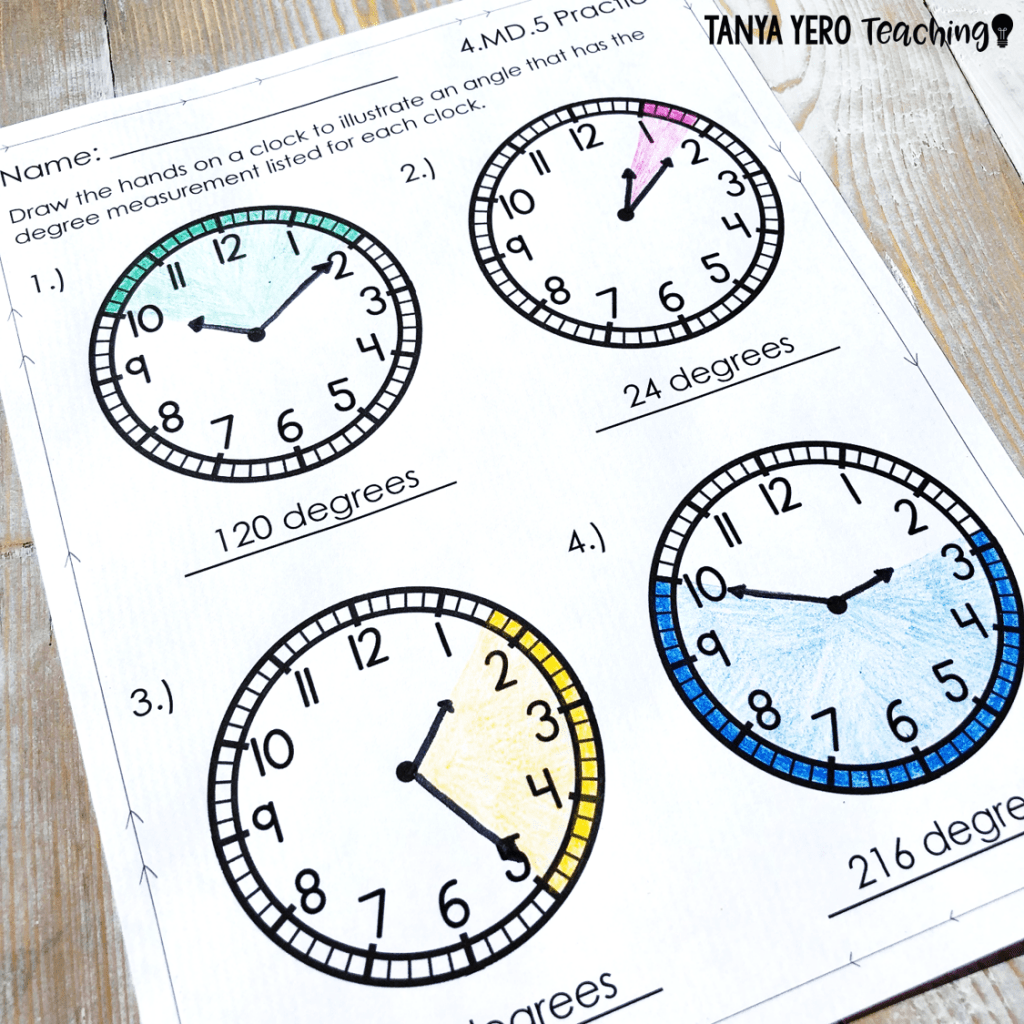
Sign up below for FREE printables and templates to use in your classroom to teach this standard.
Success! Now check your email to confirm your subscription. YOU'RE SO CLOSE TO YOUR FREE MATH PRINTABLES!
DON'T MISS OUT!
SUBSCRIBE NOW TO OUR NEWSLETTER TO RECEIVE YOUR FREE PRINTABLES FOR THIS LESSON!
START TEACHING CONCEPTUALLY NOW!
